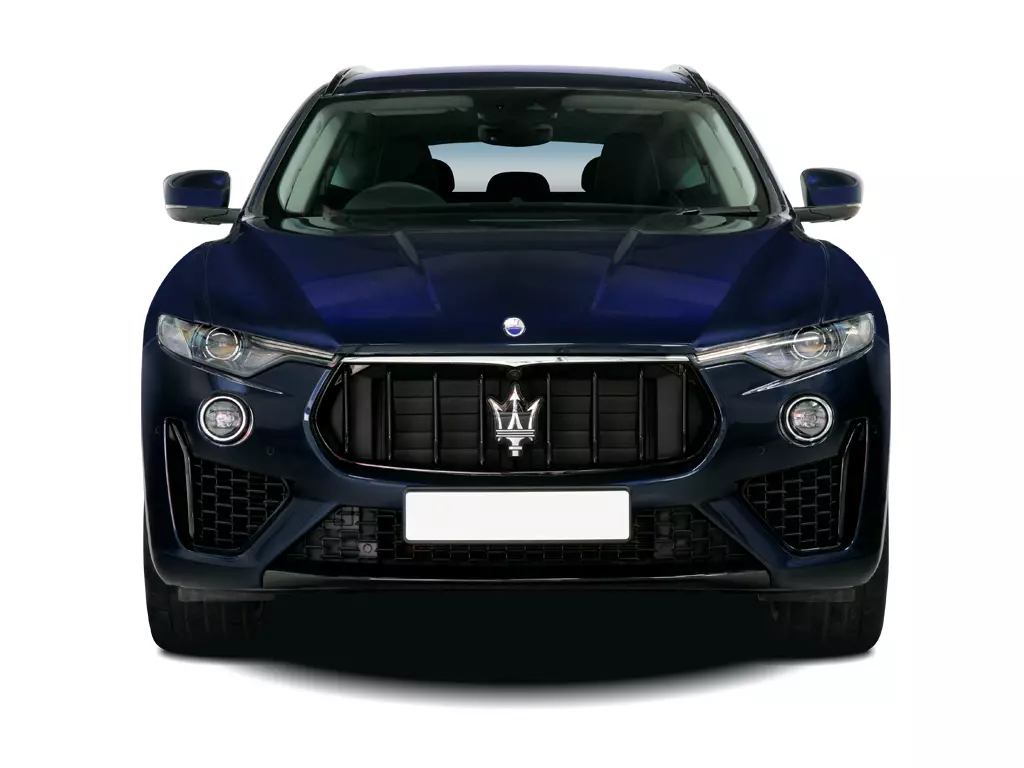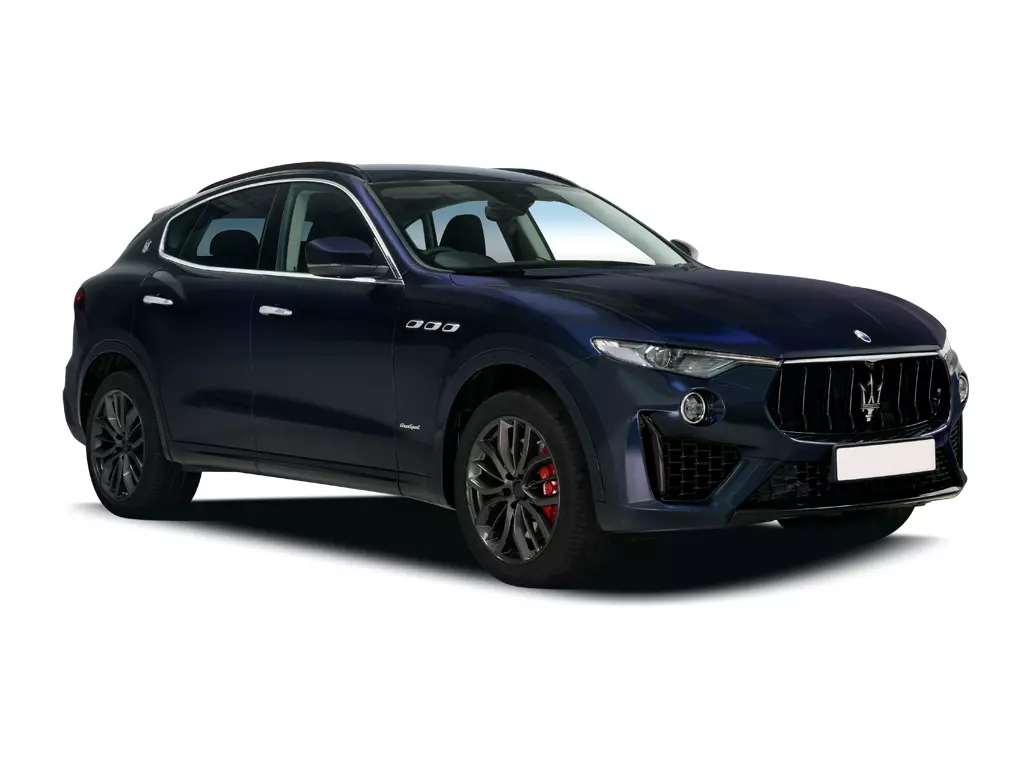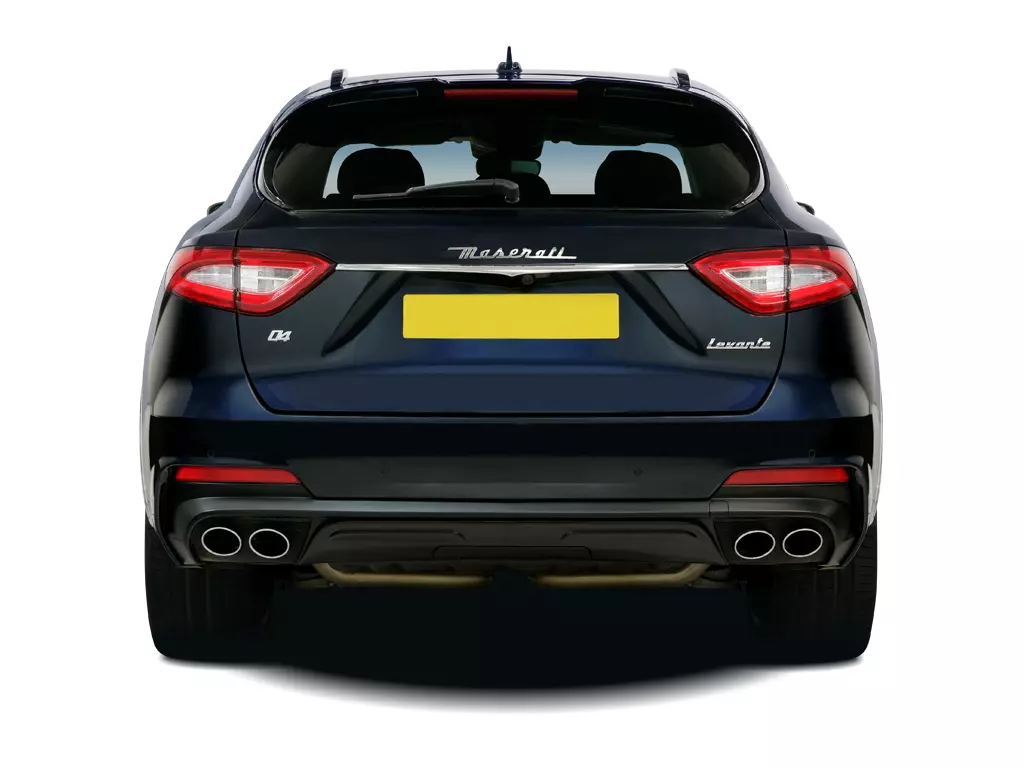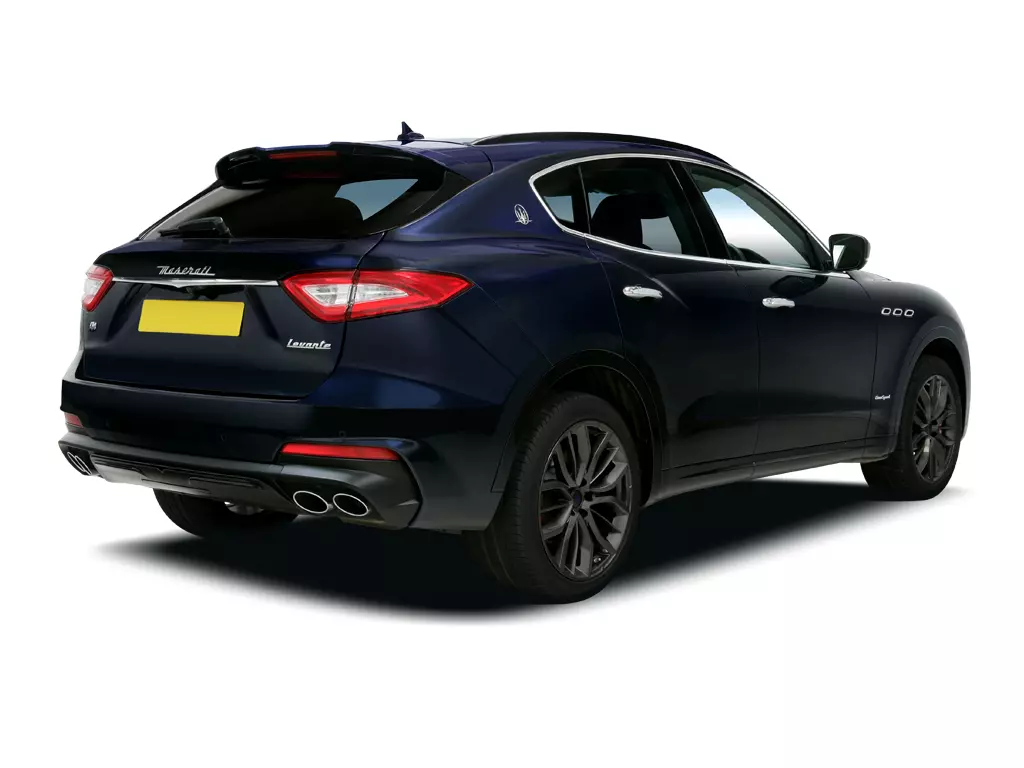
Maserati Levante Hybrid GT Sport Pack 5dr Auto
- Automatic
- Petrol
- 27.7 mpg
- 5 door suv
- 232 g/km CO2
-
232 g/km CO2 emissions
-
27.7 mpg Fuel efficiency
-
6 secs 0 to 62 mph
-
330 bhp Engine power
Ten Second Review
The Levante is a luxury SUV from a brand you possibly wouldn't expect to be making such a thing. It's a luxury crossover with rather exotic genes. And a car that in recent years has been crucial for its maker, Maserati.
Background
It's mark of the rise and rise of the SUV that every single luxury brand now knows it has to have such a thing within its model portfolio. Maserati has been dabbling with the idea for years, showing its Kubang concept at motorshows as long ago as 2003. The brand finally got around to updating this Giugiaro prototype in 2011, but it took until 2016 to get it into production, badged as the Levante. Was the wait worthwhile? Let's find out.
Driving Experience
Levante customers needing to keep their spend the right side of a lucky lottery win choose between two petrol options; either a 430hp 3.0-litre petrol V6 or, more likely, the Alfa-derived mild hybrid 2.0-litre petrol 330hp four cylinder engine that also sustains this model's Grecale SUV showroom stablemate. We tried the fieriest 580hp 3.8-litre petrol V8 version. The two mainstream powerplants are quite closely matched, though the 2.0-litre model has significantly less mid-range grunt than the 3.0 V6 (there's 130Nm less torque to play with). Despite that, the performance figures aren't actually that much different. With four cylinders, the Levante powers to 62mph in 6.0s en route to 152mph; with six cylinders, those figures are improved to 5.2s and 164mph. Even the soundtrack, rather surprisingly, isn't massively different between the two engines; the engineers worked for ages to give the electrified base Levante a traditional 'Maserati growl', which cuts in once you've given the car a bit of a boot to get going and got the e-Booster electric turbocharger spinning through the mid-range. Across the range, this car doesn't offer the sharpness you'd find with many rivals, but it compensates with excellent refinement and an accomplished standard of ride from a standard air suspension system that works with adaptive Skyhook dampers. The 8-speed ZF auto transmission responds with smoothness and alacrity, particularly if you decide to take control yourself with these cool Ferrari-style alloy paddleshifters and click out of the 'Normal' drive mode into green-themed 'Sport'. The V8 version we tried adds an extra orange-themed 'Corsa' drive mode setting, which when engaged will drop the car by 35mm, stiffen the ride, sharpen the throttle response, give more aggressive gear changes and fire you to 62mph in just 4.1s en route to 188mph. Talking of drive settings, all Levantes get an 'ICE' drive mode for slippery mornings; and an 'Off Road' mode which raises ride height by at least 25mm.
Design and Build
This car is based on Maserati's Kubang concept. That prototype was originally supposed to run on Jeep hardware and be built in the US. In the event, the Levante is actually put together from Maserati bits and is screwed together in Italy at Fiat's huge Mirafiori plant in Turin. Aluminium is extensively used around the structure and the bodywork - you'll find it in the doors, the tailgate and the bonnet for example. Despite that, the Levante is still a pretty heavy thing, tipping the scales at over 2.2-tonnes - which makes it significantly heavier than rivals like the Range Rover Sport or the Porsche Cayenne. Open the frameless doors then step inside and you'll find the Levante's cabin furnishings as sumptuous as you'd expect those in a Maserati to be. A typical customer will love the white double-stitched extended leather dash, the quilted door cards, the alcantara roof lining, the silver branded door scuff plates, the neat little A-pillar speakers and the potential to add silver pedals and lottery-level embellishments like carbonfibre centre console trim. More importantly, as you'd expect from a Maserati, huge cooly-crafted metal paddleshifters sit behind the steering wheel and there's a classic analogue clock at the top of the dash. The classic analogue approach is also reflected by the conventional dials that still feature in the instrument binnacle, slightly betraying the age of this design; as does the rather restricted 8.4-inch size of the 'Maserati Touch Control+' centre stack screen. In contrast to the high-consoled 'cockpit'-style feel of a rival Porsche Cayenne, the driving position here is unapologetically commanding, which isn't particularly sporty but is ultimately welcome given the enormous expanse of the bonnet ahead. There's comfortable room for two in the back, as you'd expect. And the powered tailgate rises to reveal a 580-litre boot, extendable to 1,625-litres with the rear bench folded.
Market and Model
You won't be expecting this Levante to be inexpensive. It isn't. Introducing the only slightly Grecale SUV beneath this model has emboldened the brand to push the Levante a little further up-market, with the result that by the time of this test in Autumn 2023, the least expensive 'GT Ultima' version, a recipient of the brand's mild hybrid 2.0-litre petrol 330hp four cylinder engine, was priced at around £93,000. The alternative V6 'Modena Ultima' model, featuring a 430hp 3.0-litre petrol V6, was pitched at nearly £115,000. We tried the 580hp 3.8-litre petrol V8 Trofeo model, which at the time of this review was only available in a special run-out 'V8 Ultima' form costing around £160,000. Maserati told us they'd be making only 206 more of these V8 Levantes, the final production divided equally between 'Nero Assoluto' or striking 'Blu Royale' paintwork. Once they're gone, that'll be the end of an era. Almost all Levante customers though, stick with the four cylinder model, which looks a little under-powered and under-cylindered to command a near-six-figure price tag. Still, it's undeniably a more exclusive choice than the premium SUVs it's up against - primarily Porsche's Cayenne but also cars like the BMW X6, the Audi Q8, the Mercedes GLE Coupe and the Range Rover Sport. You'll need to decide whether that's enough for you - and whether a Levante really is worth nearly £25,000 more than a version of the brand's Grecale SUV with exactly the same four cylinder engine.
Cost of Ownership
You don't think about buying a Maserati luxury SUV, then worry too much about the cost of running it. Still, if you're interested, the Italian brand reckons that the Levante Hybrid can cut emissions by 18% over the non-electrified 3.0-litre V6 offered further up the range. The 'GT Ultima' Hybrid's quoted CO2 range is still nothing to write home about though, rated at 225g/km, with a combined fuel figure of 27.4mpg. You won't do as well as that with a 3.0-litre V6 model of course; the 'Modena Ultima' manages up to 275g/km of CO2 and a best of 23.3mpg. For the 'V8 Ultima' flagship model, it's a smoky best of 317g/km and a theoretical best of 20.2mpg. If efficiency is anywhere on your buying radar, then obviously you'll be looking at the four cylinder model and might, quite reasonably, have hoped for a little more frugality in this electrified era. The figures of this four cylinder model aren't actually that much different from those of a six cylinder mild hybrid Audi Q8 55 TFSI (243g/km and 26.4mpg). And they're also not very much different from the readings of the base 3.0 V6 Porsche Cayenne Coupe you might have chosen instead (247g/km and 25.9mpg), that being a car lacking any kind of electrification at all. Now that Maserati has established its SUV credentials, the used market should be quite comfortable when the time comes to sell this Levante. As a result, residual values should be strong thanks to the car's relative rarity. And the engines are proven Fiat Group units, so are unlikely to cause any issues.
Summary
Too often, Maserati has lived off its past glories and traded on the image of Fifties GT sportscars driven by iconic Italian movie stars. The production reality, even in the later part of the last century and the early part of this, was rather different, Maserati models being those you chose over German rivals only if you were prepared to put up with patchy build quality, frustrating switchgear and borrowed tech. The point where things began to change can be traced to the launch of this Levante back in 2016 and since then, the brand seems to have gained a fresh sense of direction. You'll feel more of that at the wheel of this car's more modern SUV showroom stablemate, the Grecale, but the Levante still has a credible appeal for those besotted with the Trident badge who see nothing un-Maserati-like in the idea of a 2.2-tonne Crossover primarily powered by a little 2.0-littre four cylinder mild hybrid engine. Combine that with the lately-inflated near-six-figure starting price and we might find ourselves struggling with that proposition, were we to be in this part of the market. But the Levante feels a more credibly exotic thing with more cylinders beneath the bonnet, particularly in this gloriously emotive V8 form. In contrast to modern Maseratis of the not too distant past, it's more a fine Chianti than a corked Prosecco. But there's still a bit of both here that might leave you undecided about signing that final fat cheque. With Maseratis, it was always thus. And perhaps it always will be.
- Kick sensor for power tailgate
- Power tailgate
- Stop/start system
- Air shutter control
- Body colour lower mouldings - lower bumpers, wheels arches and sides
- Body coloured side skirts, front and rear fascias with chrome inserts on front fascia
- Chrome line exterior
- Front and rear sport fascias with front inserts, front lower profile and rear diffuser in gloss black finish
- GT exterior trim
- Rear side wing doors
- Sport roof spoiler
- 3 spoke multifunction steering wheel
- Air conditioned front passenger glove box with USB Socket
- Brushed stainless steel sports pedals
- Front armrest with twin mechanical opening, with illuminated storage compartment, air conditioned and 12V socket
- One 12V socket and two USB sockets for rear passengers
- Power height and reach adjustable steering column
- Rear armrest with 2 cupholders
- Soft close doors
- 3x3 point rear seat belts
- Curtain airbags
- Drivers knee airbag
- Dual stage Driver/Passenger side, window Airbags
- Front seat belts with pre-tensioners and load limiters, rear seat belts with load limiters
- Passenger airbag deactivation system
- Rear door child safety locks
- Tyre Pressure Monitoring System (TPMS) with pressure displayed within the central digital cluster
- Aluminium key fob, with key-less entry and key-less go function with (lock/unlock button, boot opening and exterior light on)
- Perimeter alarm system including volumetric sensing, anti-lift device and electronic immobiliser
- Vodafone stolen vehicle recovery with automatic driver recognition and remote inhibition
- HC+NOx: N
- Particles: N
- Standard Euro Emissions: EURO 6
- WLTP - CO2 (g/km) - Comb: 232
- WLTP - CO2 (g/km) - Comb - TEH: 243
- WLTP - CO2 (g/km) - Comb - TEL: 220
- WLTP - CO2 (g/km) - Extra High: 231
- WLTP - CO2 (g/km) - Extra High - TEH: 244
- WLTP - CO2 (g/km) - Extra High - TEL: 217
- WLTP - CO2 (g/km) - High: 200
- WLTP - CO2 (g/km) - High - TEH: 209
- WLTP - CO2 (g/km) - High - TEL: 189
- WLTP - CO2 (g/km) - Low: 317
- WLTP - CO2 (g/km) - Low - TEH: 333
- WLTP - CO2 (g/km) - Low - TEL: 301
- WLTP - CO2 (g/km) - Medium: 229
- WLTP - CO2 (g/km) - Medium - TEH: 237
- WLTP - CO2 (g/km) - Medium - TEL: 220
- Camshaft: DOHC
- Catalytic Convertor: True
- CC: 1995
- Compression Ratio: 9.5:1
- Cylinder Layout: IN-LINE
- Cylinders: 4
- Cylinders - Bore (mm): 84
- Cylinders - Stroke (mm): 90
- Engine Layout: NORTH SOUTH
- Fuel Delivery: TURBO INJECTION
- Gears: 8 SPEED
- Number of Valves: 16
- Transmission: SEMI-AUTO
- EC Directive 1999/100/EC Applies: False
- WLTP - FC (l/100km) - Comb: 10.2
- WLTP - FC (l/100km) - Comb - TEH: 10.7
- WLTP - FC (l/100km) - Comb - TEL: 9.7
- WLTP - FC (l/100km) - Extra High: 10.2
- WLTP - FC (l/100km) - Extra High - TEH: 10.8
- WLTP - FC (l/100km) - Extra High - TEL: 9.6
- WLTP - FC (l/100km) - High: 8.8
- WLTP - FC (l/100km) - High - TEH: 9.2
- WLTP - FC (l/100km) - High - TEL: 8.3
- WLTP - FC (l/100km) - Low: 14
- WLTP - FC (l/100km) - Low - TEH: 14.7
- WLTP - FC (l/100km) - Low - TEL: 13.3
- WLTP - FC (l/100km) - Medium: 10.1
- WLTP - FC (l/100km) - Medium - TEH: 10.4
- WLTP - FC (l/100km) - Medium - TEL: 9.7
- WLTP - MPG - Comb: 27.7
- WLTP - MPG - Comb - TEH: 26.4
- WLTP - MPG - Comb - TEL: 29.1
- WLTP - MPG - Extra High: 27.7
- WLTP - MPG - Extra High - TEH: 26.1
- WLTP - MPG - Extra High - TEL: 29.4
- WLTP - MPG - High: 32.1
- WLTP - MPG - High - TEH: 30.7
- WLTP - MPG - High - TEL: 34
- WLTP - MPG - Low: 20.2
- WLTP - MPG - Low - TEH: 19.2
- WLTP - MPG - Low - TEL: 21.2
- WLTP - MPG - Medium: 28
- WLTP - MPG - Medium - TEH: 27.2
- WLTP - MPG - Medium - TEL: 29.1
- Alternative Fuel Qualifying: False
- Badge Engine CC: 2.0
- Badge Power: 330
- Based On ID: N
- Coin Description: Hybrid
- Coin Series: GT Sport Pack
- Generation Mark: 1
- Insurance Group 1 - 50 Effective January 07: N
- Man Corrosion Perforation Guarantee - Years: 4
- Manufacturers Paintwork Guarantee - Years: 3
- NCAP Adult Occupant Protection %: N
- NCAP Child Occupant Protection %: N
- NCAP Overall Rating - Effective February 09: N
- NCAP Pedestrian Protection %: N
- NCAP Safety Assist %: N
- Safety Concerns: False
- Service Interval Frequency - Months: 12
- Service Interval Mileage: 9300
- Special Edition: False
- Special Order: False
- Standard manufacturers warranty - Mileage: 999999
- Standard manufacturers warranty - Years: 3
- Timing Belt Interval Frequency - Months: N
- Timing Belt Interval Mileage: N
- Vehicle Homologation Class: M1
- 0 to 62 mph (secs): 6
- Engine Power - BHP: 330
- Engine Power - KW: 243
- Engine Power - PS: True
- Engine Power - RPM: 5750
- Engine Torque - LBS.FT: 332
- Engine Torque - MKG: 45.9
- Engine Torque - NM: 450
- Engine Torque - RPM: 2250
- Top Speed: 152
- Emissions Test Cycle: WLTP
- RDE Certification Level: RDE 2
- Alloys: True
- Space Saver: False
- Tyre Size Front: 265/45 R20
- Tyre Size Rear: 265/45 R20
- Tyre Size Spare: N
- Wheel Style: NEREO
- Wheel Type: 20" ALLOY
- Height: 1693
- Height (including roof rails): N
- Length: 5005
- Wheelbase: 3004
- Width: 1981
- Width (including mirrors): 2158
- Fuel Tank Capacity (Litres): 80
- Luggage Capacity (Seats Down): 1625
- Luggage Capacity (Seats Up): 580
- Minimum Kerbweight: 2090
- No. of Seats: 5
- Turning Circle - Kerb to Kerb: 11.7
/?format=webp)
/?format=webp)
/?format=webp)
/?format=webp)
/?format=webp)
/?format=webp)
/?format=webp)
/?format=webp)
/?format=webp)
/?format=webp)





